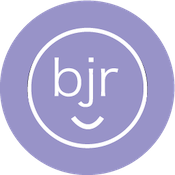Brain Images Share the Secrets of Limb Differences
Earlier in 2013, I discovered a research lab in my town that is focused on how the brain manages limb differences. It’s pretty remarkable. I’ve stayed in touch with Scott Frey, the director of Brain Imaging Center & Rehabilitation Neuroscience Lab at the University of Missouri. He recently reached out to share and update in his research. You may be interested in getting involved with the research. Reach out and chat with Scott, I’m thrilled we could get Jordan involved in 2014 since 8 years-old is the youngest age his team has successfully researched.
Ladies and gentlemen, here’s Scott Frey’s research findings in his own words:

This is an image showing brain activity associated with reaching an grasping an object in the left hand with an adult right hand amputee. The front of the head is toward the top of the image.
How might being born without a hand influence the development of the brain? Do regions that would have been devoted to feeling and controlling movements of the absent hand take on other functions? If so, then what are these functions and how might they contribute to successful adaptation? Answers to these questions could be important for developing evidence-based systems of support to ensure that they achieve their full potential. More broadly, this work may revolutionize our understanding of the human brain’s capacity to respond adaptively to changes and challenges presented by injury or disease.
At the University of Missouri’s Brain Imaging Center, members of the Rehabilitation Neuroscience Laboratory are using functional magnetic resonance imaging (fMRI) to address these questions. This technique is responsible for the many colorful brain images that frequently make their way into the popular media. Unlike x-rays or CAT scans, no ionizing radiation is involved, making fMRI a very safe and repeatable procedure. Participants are asked to rest inside the MRI machine while performing a series of basic tasks such as moving (or imagining movements) of the face, hand, or feet, or thinking of familiar words that start with a specific letter. The result is a highly detailed map of the specific brain areas participating in these functions. We have been successful studying individuals as young as eight years, which seems to be the youngest age that kids are able to keep their heads nice and still for up to five minutes at a time.
Our early findings suggest something truly remarkable: Use of the remaining hand recruits regions of the brain that would have served the absent hand. In other words, in at least some individuals, the remaining hand appears to have more brain devoted to sensing and moving. Our current goal is to build on these initial results to try and understand the implications of such adaptation changes for hand function and prosthetic use. We also wish to know whether these adaptations impact the organization of regions devoted to other functions including language and attention. To succeed, we need volunteers. If you are interested in learning more about our work, please feel free to contact me directly. We welcome inquiries and visitors to our center. You can also learn more about the Brain Imaging Center or the Rehabilitation Neuroscience Lab.
– Dr. Scott H. Frey (freys@missouri.edu, 573-882-4616).


This is so freaking awesome! I wish I lived nearby!
Caitlin, you should reach out to Scott. He might have grant money that could pay for travel. And you could stay with us!
Those early results are awesome! I am very interested in continuing to follow this work, a great share!
-AM
Thanks, Alex!